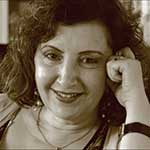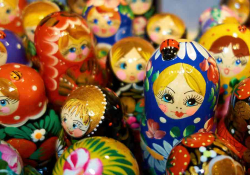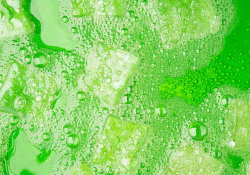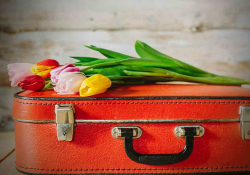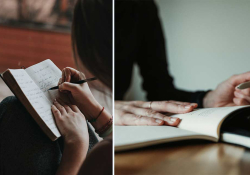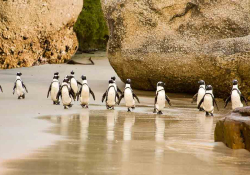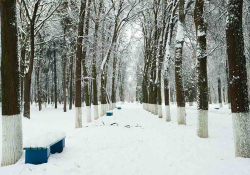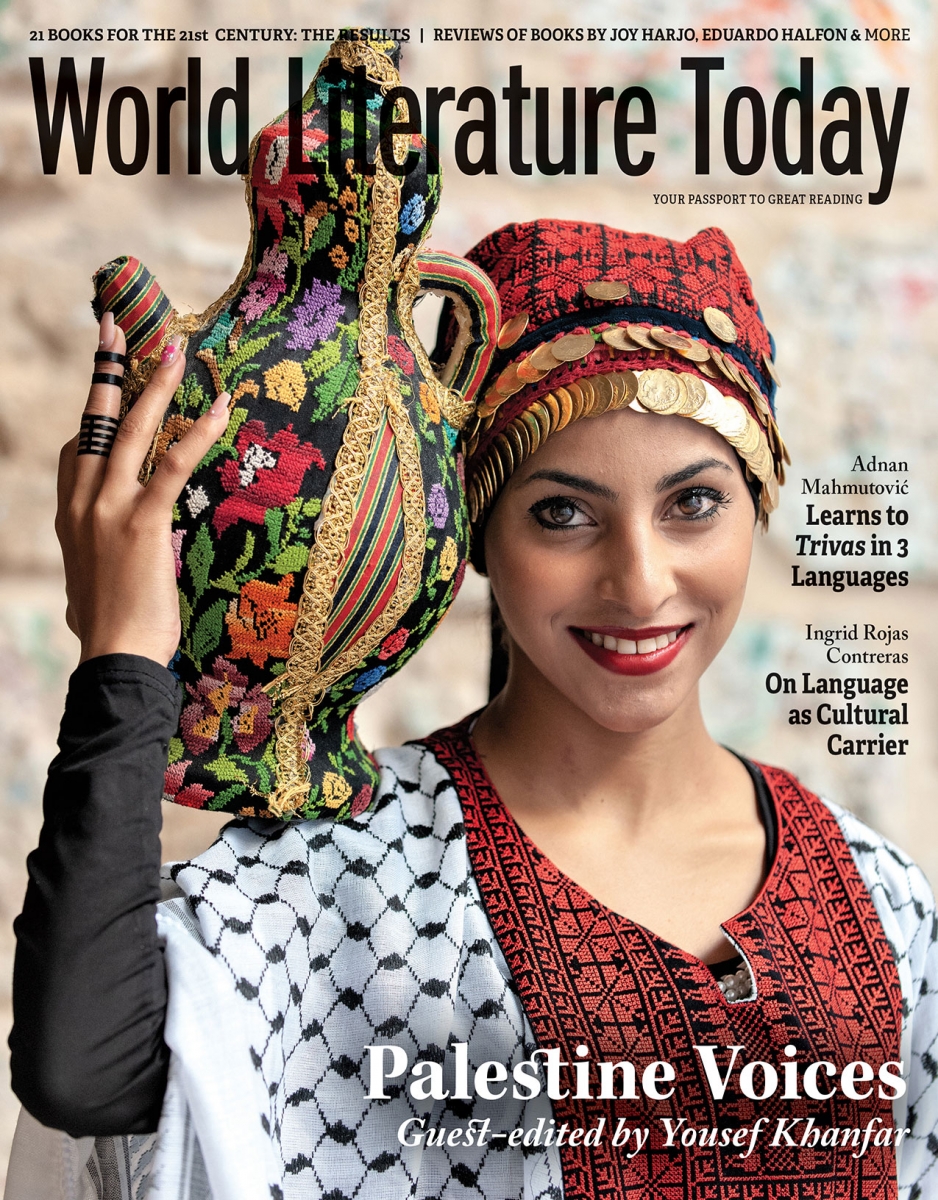Letters from the Sea
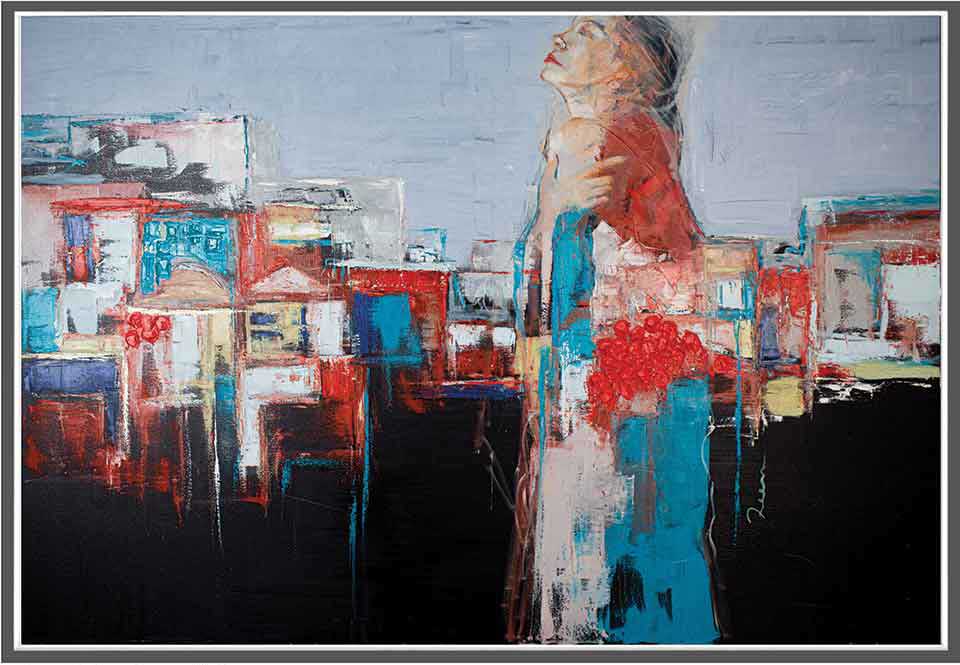
(Everything here is reported by the young man who found the bottle.)
This small light-emitting machine is currently still decoding the letters I extracted from the bottle I found floating in the sea a short while ago.
It started deciphering disconnected words: honey, summer, male bee, warmth, brown, lilac, reed, trellis, a fistful of earth, a breeze, papyrus, vanilla ice cream, grapes, spices, cassette tape, blue, flute, a shirt, a mare, snow, . . .
Before finding the bottle, I was searching for the meaning of love. The word occurred in a number of obscure texts I came across by chance. I also found it in drawings and tapes that represented a certain form of life on earth, before the age of the mighty flood. All those peculiar names that flashed before my eyes made me nervous. It feels strange not being familiar with many words people used in the olden days. Things became different after the age of the great flood.
I became curious when I found a letter inside the bottle floating in the water. It was full of words describing the kind of love I aspire to understand. They were written by a man wanting to express his overwhelming feelings just moments before the oceans flooded the earth.
One of the tasks of my mini-Japanese machine is to help me understand the meaning of objects or their associations. It can search every specialized encyclopedia at the mere touch of a button, and it telepathically knows whether I am satisfied by the result or not.
I want to know what love is, to touch it, look forward to it, carry it forever—if it exists. The word touched me deeply and added a newly mysterious and intriguing meaning to my being. During the search, warmth ran through the tips of my fingers, which are usually ice-cold.
The letter in the bottle mentioned it is one of thirty more written by the same person. So far, I have found only one; the possibility of finding more is slim. I was the only one in my group who had practiced diving and living underwater. This helped me find the bottle after the loss of old maps, the division of countries, and a total change in the environment. Landmasses and their inhabitants were transformed. It happened when the “Great Tsunami” occurred, after the melting of the North and South poles. After that, humans became two types: people of the Mountains or of the Sea.
Only one human species of different forms and colors was left after the rest drowned. It came to be called the “survival-loving” species after an announcement by the United Nations, which became a virtual moral entity no more. It stated that all of earth’s inhabitants descend from a single gene and therefore must stop their trivialities about race, which pushed our planet to the verge of extinction. The 2017 discovery of the Brighton human and similar discoveries proved that inhabitants of the North and native English people had a dark complexion and blue eyes going as far back as the mythological age. This discovery coincided with the birth of a new generation with a fair complexion and strikingly colored eyes. They mixed with other generations who had different skin colors and looks and settled everywhere. Their movement led to the end of a narrow-minded, limited imagination that defined the species according to skin and eye color.
The great damage took place more than thirty years ago, when the ruler of the strongest nation in the North met with another leader in the extreme South. Both had obnoxious characters, tempers, and conflicting commercial interests. One day on a ferry they fought over which one of them had a larger nuclear button. The confrontation led to the use of experimental hydrogen and vacuum bombs, like the flexing of muscles. Their action shook the world, killed a large number of people, and caused the oceans to completely submerge the delightful coastal cities.
The only refuge was on top of the mountains or in boats, or practicing to stay underwater for long hours. They submitted to harsh exercises to help future generations escape the fate of previous generations. Mountain inhabitants trained to jump over hills and distant summits, like the rubber man who appeared among a population called the Palestinians that faced serious dangers. This was during the era when their colonizers erected high walls to separate their villages, cities, and family members. Strangely, this tragedy led to a generation of high-wall climbers. They jumped over electrified barricades and walls covered with metal and electrified wires and became able to live atop high trees.
Their oppressors were mainly concerned with selling arms and building walls on demand, anywhere in the world. Most of them wanted to remain superior over the poor people imprisoned behind the walls. They wrote on what dilapidated roads remained, on collapsed bridges and shaky high-rises weakened by the violence of the floods: “We have no peace partners”; “The land and space belong only to us”; “We control your decision-making, and we will remain God’s chosen people despite you all.”
They resembled others who found it difficult to accept DNA evidence showing that races mixed throughout the ages. The concept of a pure race superior over others was a fallacy. All peoples are alike despite the diversity of their religions and creeds. The variety in race and skin tones are an external veneer, much like the colors of apples.
Nevertheless, this bottle and the strange letter it contained were driving me crazy!
Under the word love, there are millions of songs, expressions, dances like the stars, and as many enigmatic expressions that resemble the distant galaxies.
I want to understand the essence of love, but the machine only provides information that leads to nothing specific. Under the word love, there are millions of songs, expressions, dances like the stars, and as many enigmatic expressions that resemble the distant galaxies. I am specializing at present in oceanography to protect the continuity of the human race. I measure the levels of acid and radiation in water, which have no connection to the language of love.
The words in the letter were complex and obscure. I was compelled to try and understand the significance of the images that streamed before me. I wanted to find the meaning of love beyond the dictionaries and encyclopedias. The search seemed endless, until I found an Arabic manuscript by the Andalusian poet Ibn Hazm entitled The Ring of the Dove. It is a treatise on love composed of thirty chapters; twelve are devoted to love traits both favored and reviled. My head spun as I read the introduction:
“God bless you; love is playful in the beginning and turns serious in the end.”
What can this mean to a person like me who does not know the difference between what is serious and what is playful in the first place?
Love seems enigmatic: tied to tragedies, dangers, anger, and to unusual kinds of joy and happiness at the same time. It is perplexing when it places the fate of a person in the hands of the beloved. I listened to many songs in different languages and read many poems that, in vain, attempt to describe love. They failed to articulate what seemed like a legendary being, whose genes no one is able to map.
What is baffling is that sources tie love to an infinite variety of writing, food, and dance, for example in the song “Sway”: “When marimba rhythms start to play / Dance with me, make me sway / Like a lazy ocean hugs the shore / Hold me close, sway me more.” It is hard to comprehend how the ocean that easily swallows people could lay back and hug the shore before the lovers. Its waters have only swept and roared with anger ever since it drowned the immigrants from Africa, Asia, and the Middle East on their way to the northern countries.
Near the spot where I found the bottle, I found a telescope. I hoped our smart instruments could telepathically link us with those who sent these things and enable us to see things through their eyes.
After I found the letter, I began by analyzing the text on the telescope and was finally able to see the connection between them. I found two symbols on the body of the steel tube, carved inside a design symbolizing a heart. My machine showed that each symbol referred to the name of one of those two unknown lovers.
I withdrew and began watching a strange event on a television screen: headlines, scenes of wars in the Middle East, the Balkans, Yemen, Syria, Palestine, and everywhere. They caused the great flood. Luckily, some managed to survive a war that pitted humans against one another and against nature for successive generations.
I did not carry the Chinese pine tree oil that helps me sleep; nonetheless, I slept profoundly. The following morning, I woke to music from the radio I had adjusted to the word love. I heard waltzes, oriental dance music, and Spanish flamenco. A full-fledged nonstop party was streaming through the equipment from the old world.
I had the clever idea to connect my equipment with the memory of the old telescope, as atoms carry memories of events. It transmitted what the eyes of the telescope owner had seen during his last moments. He was lying by a lake, watching the white birds cover the sky in flight over the blue ocean. I had no idea such colors existed because the oceans and seas are so polluted. I saw an azure sea and a white sky. What a magnificent combination!
The man was relaxing on the grass waiting for his wife, a photographer for a magazine called National Geographic. She was working on a project for the protection of nature and its rare species. He was the editor, and she was the one taking photos of animals threatened with extinction by hunting, pollution, and the melting ice. The couple saw a starved white bear covered in dirt and soot; the crazy force of the melting ice water made it impossible for the bear to catch any fish. The couple adored dolphins, crocodiles, seals, and seal pups, delicate birds, white North Pole foxes, dog-wolves, gray and brown gulls. The couple agonized over the overwhelming pollution and dirt in what used to be hard-to-reach areas, now crowded with tourists and amusement seekers. Nature became a source of luxury products and entertainment. Meanwhile, poor indigenous inhabitants like the Indians were kept behind walls and barbed wire to hide them from the eyes of the happy seekers.
The man lay under the rays of a honey-colored sun, waiting for his wife to finish photographing the birds that covered the verdant hill overlooking the North Sea. He closed his eyes in a wonderful dream as the first water invasion took place.
He rushed to look for his wife, leaving a bulging bag containing a telescope and a bottle with his last love letter ready to drop in the water. He had previously dropped twenty-nine bottles into the water for a reason unknown; a celebration of love that united them.
The enormous waves rose and swallowed the whole world, or this is how he felt.
And now what do I do as my hair stands on end because of this sad story? I can only pursue my search for meanings I didn’t understand and never thought of: honey, summer, male bee, warmth, brown, lilac, reed, trellis, a fistful of earth, a breeze, papyrus, vanilla ice cream, grapes, spices, cassette tape, blue, flute, a shirt, a mare, snow.
I want to understand the language of the dreaming man, be like him, and understand the use of those words.
I want to understand the language of the dreaming man, be like him, and understand the use of those words.
I could visit some youth, some specialist in trees and plants who might comprehend those words or understand my interest in every flower blooming in an unusual spot.
I could also seek specialists in the sun, now that we are threatened with its imminent extinction; and psychologists, to be sure they have found the means to cure humans—those who want to grab everything on the face of the earth and write panegyrics on fallen bridges and ruins because they think they are superior and more important than the rest of humanity.
I want to ask if there is a person who can explain to me the meaning of love.
One day I will certainly understand what the man was dreaming of while he lay waiting for his wife:
Blue, white, azure, turquoise . . .
Those colors are my first lesson in dreaming or maybe in love!
I must!
Here the young man’s open-ended dream came to an end as he told his tale. I saw him as a whole, in an awakened state I had never lucidly imagined before.
Ramallah
Translation from the Arabic
